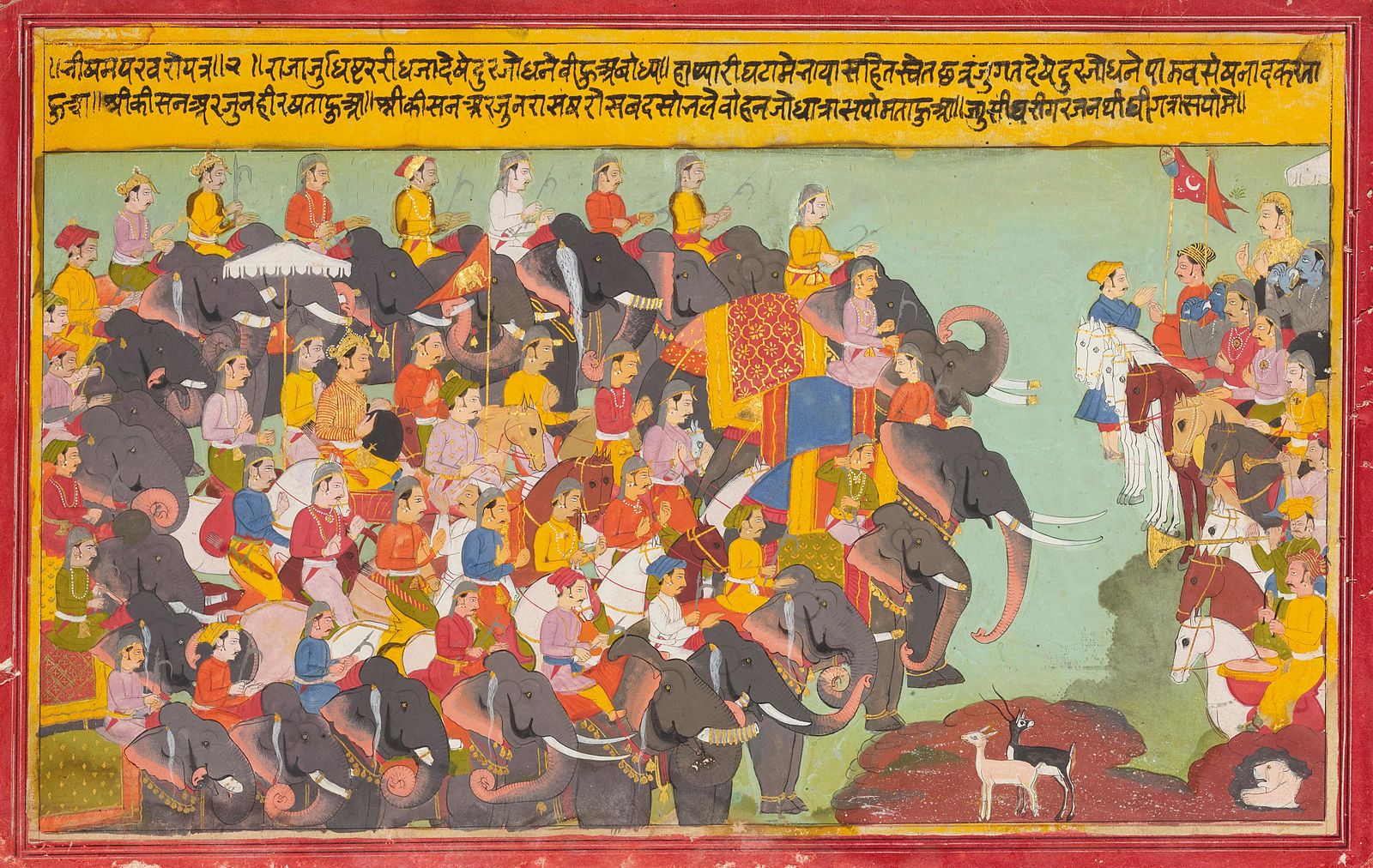An example of dharmayuddha is the Kurukshetra War from the Indian epic poem Mahabharata, where two groups of cousins, the Kauravas and Pandavas fight for the throne of Hastipura in the Indian kingdom of Kuru. Completed around the 4th century, the Mahabharata is considered the longest poem ever written, with about 1.8 million words in total, and the Kurukshetra War is a central section of the account, forming over a quarter of the entire poem.
The entire story of the war is incredibly long and complicated and spanned 18 days and I really wish I could digest it but anyway what I could process was how the dharmayuddha was carried out in the war. Rules were set for both the Kauravas and Pandavas to follow, which generally follows:
- Fighting must begin no earlier than sunrise and end exactly at sunset.
- No more than one warrior may attack a single warrior.
- Two warriors may “duel”, or engage in prolonged personal combat, only if they carry the same weapons and they are on the same type of mount (on foot, on a horse, on an elephant, or in a chariot).
- No warrior may kill or injure:
- a warrior who has surrendered.
- an unarmed warrior.
- an unconscious warrior.
- a person or animal not taking part in the war.
- a warrior whose back is turned away.
- A woman, farmer or prisoners of war, who are considered sacred.
- No warrior may strike an animal not considered a direct threat.
- The rules specific to each weapon must be followed. For example, it is prohibited to strike below the waist in mace warfare.
- Warriors may not engage in any unfair warfare.
The rules were flouted soon after the death of Bhishma, a prominent warrior on the side of the Kauravas. On the 13th day, Abhimanyu was killed with a strike to the back to the head, which was illegal. I thought it was an interesting parallel to the idea of how classical physics has defined rules that constrained what could happen in the macro world, but these rules are defiantly flouted in the quantum world, tainting our perception of what is possible.
I thought it would be interesting to create a tapestry of sorts with the constraints of these rules of battle in place within the motifs, with the opposing sides

Motifs
- Weapons
- Bows
- Maces
- Swords
- Lances
- Darts
- Battle animals
- Elephants
- Horses
- Chariots
- Warriors
- Parasols
- Flags

